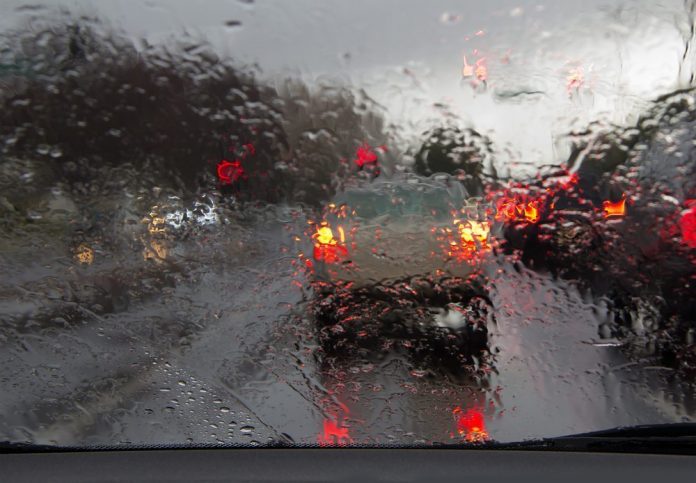Since rainy days are few and far between in #Bahrain, people are generally either ignorant or careless about taking proper precautions while driving. Indeed sunny days virtually round the year make them believe they could maintain the same speed and adopt the same driving style even when it is pouring. This obviously results in an inordinately large number of accidents on wet days as is borne out by Traffic statistics of successive years.
Here are some rules to follow when driving in the rain or, if the rain has stopped, on a wet road:
You definitely must not indulge in your habit of speeding on wet roads. Pull back the reins on your accelerator, pay more attention to the road and to the flow of traffic and restrict yourself to a maximum of 80kmph (60 is a better bet though). Remember, rain makes roads slippery and therefore even the hardest pressure on brakes is not as effective to stop the vehicle within the normally-expected distance. That’s one reason why there are more accidents on a rainy #day. For the same reason, you should start to apply the brakes well in advance when you approach a traffic signal showing red.
As far as possible, you should avoid changing lanes on a rainy day since this involves application of brakes by you as well as by the person you are going to overtake and synchronisation is a more demanding exercise in the rain. Moreover, if you notice, in the rains a lot of drivers tend to put their hazard lights on. In that scenario, your indicator to change lane may be confused with just another hazard light. The best remedy is to avoid the fast lane altogether when the roads are wet.
It calls for extra attention on the road on an extraordinary day so you must remember to keep your belt on when in the driver’s seat since you may have to apply the brakes more often – and quite often, suddenly. And you definitely must not use the mobile which is always a distraction.
Do not switch on the hazards light on a rainy day as a matter of course or out of habit or in imitation of other drivers. If it is raining, it is a hazard to no one. Hazard lights are meant to be switched on when there is a hazard on the road i.e. when it is blocked due to an accident, when there is some kind of obstruction on the road such as a fallen tree or some object which may have fallen out of a vehicle or been planted on the road, when you have to slow down or stop to make way for a hospital emergency van or some other equally grave reason.
When passing through a low-lying stretch of the road where water may have accumulated and the road itself might not be visible, it is important to drive very slowly, especially in busy areas, markets or residential colonies. This is necessary not only to avoid splashing passersby on foot with ditchwater but to ensure you do not get stuck in some stray open manhole

